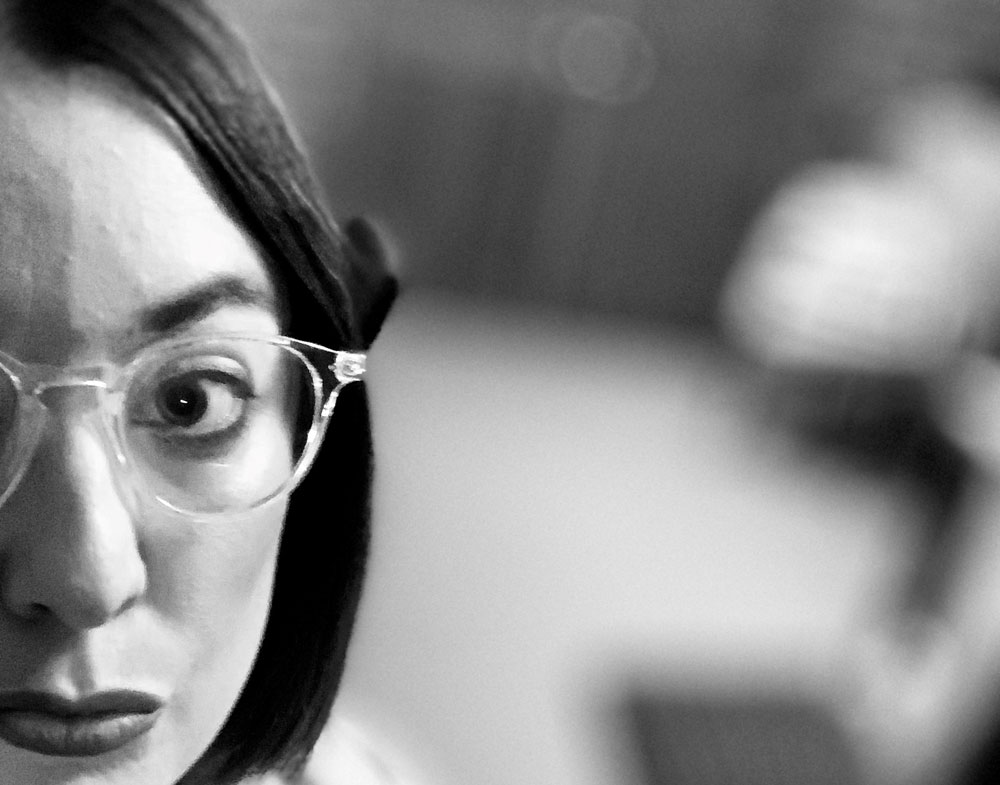Social media: a minefield and miracle

Beth Doherty
Beth Doherty, Religious Education and SOSE Teacher at St Clare’s College, was one of the speakers at the Catholic Bishops Social Justice Statement launch on September 3. Here is the transcript of her speech.
In 2013, as the cardinals of the world converged on Rome to elect Pope Francis, there was much discussion about who Pope Benedict’s likely successor would be. These conversations made their way to social media very quickly and some of the more tech-savvy cardinals and of course journalists and interested people from across the globe had lively exchanges. The night the Pope was elected, a twitter account carrying the handle @SistineSeagull emerged, and began sending out all manner of entertaining tweets. One tweet has @SistineSeagull peering down into the chimney and eyeing off the cardinals’ lunch.
Being the Catholic nerd that I am, I held a conclave party with my friends, and made a conclave pizza, lots of little cherry tomatoes to represent the zucchettos of the cardinals and one piece of bocconcini cheese to represent the white hat of the Pope. My office at the Bishops conference set up an Aussie Pope Alarm and people would receive a text to their mobile when the Pope was elected by signing up on a hastily coded website.
Earlier in the lively social media commentary a meme had emerged with a cartoon of two cardinals discussing how to stop their brothers from leaking information from the conclave to the public about the progress of the vote. In this image they close all of the windows and proclaim to one another: “Twitter will be completely prohibited from the conclave.” Outside the window is a dove, knocking on the glass. “Let me in”, says the dove, “I’m not twitter, I’m the Holy Spirit.”
Well, it does seem that the Holy Spirit managed to make its way into the Sistine Chapel in 2013. Pope Francis is known for his simplicity of life and commitment to justice, and he has embraced some of the new forms of media in a positive way.
Despite likely not necessarily being the one pressing the button on his tweets, he seems to have enormous insight into social media and its power for good, being the first pope to pose for a “selfie”, and being something of a master of the pithy, tweetable one-liner, for example: “Who am I to judge?” (Alitalia flight in 2013 on his way back from World Youth Day, Rio) and “The Church is not a museum for saints, but a hospital for sinners”, among many.
Today we are here however to launch the Australian bishops’ social justice statement, which carries the theme “Making it Real.”
The bishops’ delegate for social justice Terry Brady writes in his forward to the statement that “People of all generations hunger for friendship and genuine human encounter because we are made for community.”
Social media is minefield and miracle, a gift and a curse.
It can be positive and negative and has the potential to be used to promote hate and love in equal measure. It can be a world of far-flung fantasy and of red, raw reality.
We can use it to escape the world and yet at the same time it gives the capacity to be present to people thousands of miles away.
Across social networks there exist myriad opportunities to share truth, beauty and goodness, and yet often it is used to spread lies, filth and evil.
It is a place to debate ethical perspectives, and yet it can be a warzone from which it can be hard to switch off.
If I go through my newsfeeds, I am just as likely to see parents sharing about the joyful birth of their first child as I am to watch a woman lamenting the miscarriage she has just experienced.
- People celebrate birthdays, and seek solace upon the death of loved ones.
- People share of death and of life.
- And so, it is with our faith.
- Ecclesiastes tells us there is a time for every purpose under heaven.
- Social media can mirror, magnify, expand, contract, amplify, reduce all of those experiences.
- Social media facilitates an encounter in ways that we have perhaps never even imagined.
Between 2009 and 2015, I worked in communications for the Catholic bishops, and there was unprecedented growth in social networks. It was in realising the power of social media that I came to the conclusion that I myself needed to have some protocols, lessons, rules in place for social media.
I shared about my experiences and my discernment in two books, the first of which was a project that culminated in the eBook published in 2013 called “Word made flesh and shared among us”, a collection of essays from Catholic journalists about how they had embraced new media in their work. The second, more comprehensive project was “Tweet others as you would wish to be tweeted: A scripture-based guide to social media for the Church” which I authored in 2015. Being such a moveable feast, much of the information contained therein is hopelessly out of date, but the principles remain the same. Using a play on words of the Golden Rule, I was able to come up with some guiding philosophies that enable us to think deeply about how we use social media as a force for good.
In this year’s Social Justice Statement, some of the facts provided are instructive for those of us in the Church who are still wondering if social media is something that might leave us, yet, the stats speak for themselves.
- every day, over one million people worldwide are coming online for the first time
- the world’s average internet user spends over six and a half hours online each day
- the top three websites visited are Google, YouTube and Facebook
- on average, social media users spend over two hours on social media platforms each day
- Facebook has 2.3 billion active user accounts; YouTube, 1.9 billion; WhatsApp, 1.5 billion; Instagram, 1 billion
- five billion people use mobile phones

Of course, genuine encounter, making it real is the key message of this year’s statement.
The statement reads: every member of the Church has a distinct role to play. Pope Francis is calling us to ‘boldly become citizens of the digital world’, with the image of the Good Samaritan as our inspiration. We are called not only to love our neighbour, but to bring the love of God to the new global neighbourhood.
Social media is extremely multifaceted however and we need to exercise caution more than ever. Recently, I caught up with a friend who is one of those magical unicorns that has a left and right brain, and he helps companies to intersperse their marketing and design messaging with the realities of the tech world, which include online monitoring, hacking, analytics, algorithms and is able to explain, in simple language, why often the media messages that we have poured so much time into gets no traction online.
Social Media land is a space that can be used in overwhelmingly positive ways, but also in some negative ways.
We don’t need to go far on social media to see the harm caused by addiction, pornography and the objectification of people, particularly women. Social media plays a part in human trafficking and what we share online can be accessed by those who don’t always use these values for good.
Whether we like it or not, privacy online is almost non-existent, and we have entered a brave new world in which every google search we do, whether we are an active user on social media, provides analytical information to Facebook, Microsoft, Apple, even foreign governments about our choices, preferences and often our most intimate feelings.
This is a particularly important lesson when we search for less savoury content such as pornographic material. However highly structured our privacy settings, we can very quickly share personal information that then leads companies to infiltrate our social media feeds with even more content that leads us down dangerous and addictive rabbit holes that can be difficult to get out of.
So, we need to ask ourselves as a church, today as we launch this statement and in particular, those of us who manage any digital platform, whether it is a parish Facebook page, a personal twitter account where we share stories and links, whether what we are posting and sharing is going to contribute to building up dialogue and encounter, or if it infringes on people’s basic human dignity.
A quote from Pope Francis in the statement says the following:
“A vital step to realising this encounter is to ask ourselves what kind of ‘digital highway’ we are on. Just as we would not accept a highway built of rubble, that leads us nowhere we want to go, so too we cannot accept a digital world designed to exploit our weaknesses and bring out the worst in people. It is clear that digital platforms are built to make a profit. But where they operate to maximise profit by undermining human dignity and the common good, we must question their structure, ownership and goals.”
Over the years of working in media and education, I have embraced a number of different platforms. One of the main questions that Catholics ask me around social media is “how can we use social media in a way that is honourable, positive, that respects human dignity?”
How can we bring about the greater glory of God on our social media platforms?
There are lots of ways, and it’s important that as we learn about social media that we look for good examples of where people display charity, truth, generosity, beauty and goodness and have those as our guides.



Beth, you are very knowledgeable, but for me an oldie how do I positively find what you have told us. How do I find these as I do not have a clue. “There are lots of ways, and it’s important that as we learn about social media that we look for good examples of where people display charity, truth, generosity, beauty and goodness and have those as our guides”.
Gabrielle